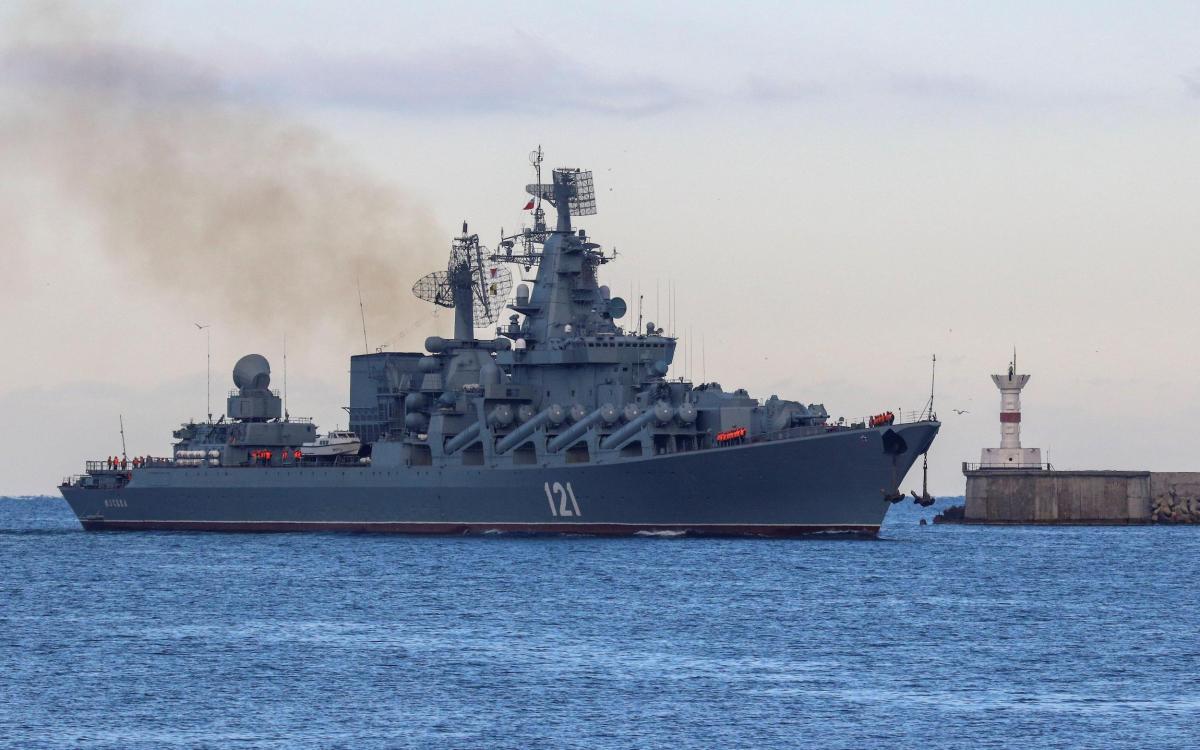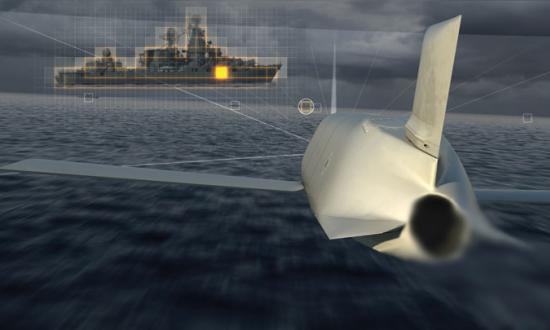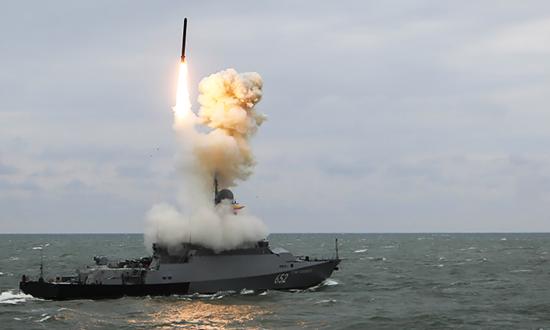The Ukrainian missile attack that sank the Russian Navy Slava-class cruiser Moskva should revive discussion regarding the tradeoffs for antiship missiles.
The cruiser was struck by two Neptune antiship cruise missiles (ASCMs) with 330-pound warheads. Photographs show she had a significant fire in the forward superstructure; media reports state that she suffered a secondary explosion from a magazine or one of her own large missiles. After some hours, she sank while under tow.
The number of hits is significantly less than the number predicted by this common rule of thumb—the amount of thousand-pound bomb high-explosive equivalents to disable a ship is approximately equal to the cube root of one-thousandth of a ship’s tonnage. Roughly, this model indicates that it should have taken five Neptune ASCMs to put Moskva out of action, not two.
Russian cruise missiles carry up to one-ton warheads designed to destroy huge aircraft carriers. Many U.S. Navy officers see this and favor large warheads, circa 500 pounds or greater, even though the likely targets are cruisers and smaller ships. But there are diminishing returns for increased warhead weight, as the effective blast area of a warhead varies with the cube root of the warhead weight. Are large warheads needed for engaging cruisers and smaller ships?
The Tradeoff Between Warhead Weight and Fuel (Range)
The Moskva and the HMS Sheffield from the 1982 Falklands War are examples of missiles with smaller warheads disabling and sinking large destroyer/cruiser-class ships. In the case of the Sheffield, residual fuel from the missile caused a conflagration, which reached a generator’s fuel tank, ignited, and spread the destruction. The fire engulfed the entire forward part of the ship and caused the ship to be abandoned. In the case of the Moskva, it appears from photographs and media reports that there was a significant fire in the forward superstructure, which reportedly caused a magazine explosion or ignited one or more of her own weapons in the large surface-to-surface missile launchers or surface-to-air (SAM) missile magazines.
The rule of thumb model is wrong, for two reasons. First, it does not consider fire damage from residual fuel, and the smoke/toxic gasses accompanying the fire. The models look only at the instantaneous damage caused by the explosion and the accompanying blast/fragmentation damage. Second, modern ships are more densely packed with explosives and flammable material in spaces not as well protected as the armored magazines of World War II ships. Moskva, on a 611-foot hull, carried 16 antisurface missiles (ASMs), 104 SAMs, 2 magazines for 130-mm guns, 6 Close-In Weapon Systems with magazines, 2 antisubmarine warfare mortars with magazines and 10 533-mm torpedoes. That is a lot of fuel and explosives throughout the entire ship. There is little space where an ASM could hit and not engulf some flammable weapon system or ammunition magazine, resulting in secondary explosions and fires. Any fire from residual fuel in the ASM missile would expand the radius of risk. Residual fuel from the attacking ASM could be as lethal as the warhead if one models the spread of the resulting fires over periods even as short as 10 to 30 minutes.
When I stood watch in CIC on a nuclear-powered cruiser some years ago, during the quiet mid-watches, for training, we would play the “22 Game.” Each watchstander was assumed to have a 22-caliber pistol (virtually, of course), and two rounds. The object of the game was to determine where to shoot those two rounds to cause the maximum damage to the ship’s warfighting capability. The resulting arguments were fierce, informative, and shocking—my sailors found ways to shut down the ship nearly completely with two puny bullets. It was informative to me as a junior officer still learning the ship. Granted, the rounds were perfectly aimed, and this was on a ship that was decommissioned 20 years ago. I assume (and hope) that defenses and ship resilience have improved, but I still would expect that a very small warhead (perhaps as small as 20 pounds), perfectly placed in the combat information center (CIC) or a weapons magazine, could do irrecoverable damage, especially if the effect was augmented by residual fuel and the impact of the carcass of the missile (another thing that is often ignored).
Current ASM sensors have improved, along with the artificial intelligence that guides them. Weapons could perhaps be developed in which the ASM could identify the target class and place the hit precisely, in a magazine or CIC. With precision, a small warhead could accomplish the mission, allowing (within weight and space constraints for the weapon) more fuel and, therefore, more range. Current warfighters want to out-range their opponents. The late retired Navy Captain Wayne P. Hughes Jr.’s Fleet Tactics: Theory and Practice emphasizes the value of striking first.
I would wish for a long-range, small warhead ASM—one that probably could be packed two or four missiles into each standard missile launcher. I would have more missiles with longer range. If I got the first long-range hits, they could be decisive; if the range was shorter, residual fuel would augment the effectiveness of the hits. With more missiles loaded on the ship, I could better handle swarming tactics from fast missile hydrofoils or gunboats, and better overload a larger ship’s defensive systems. Precise, small warhead hits would be more lethal than many currently believe, as demonstrated by Moskva and Sheffield.






